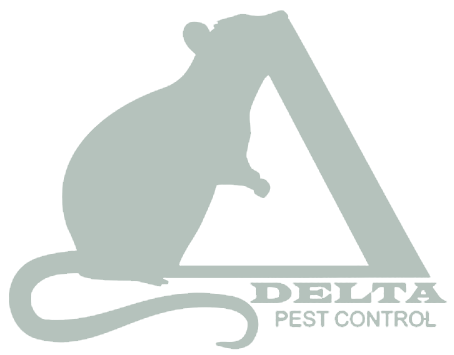Blog Post
Nutria Are Everywhere!
Delta Pest Control • Jun 22, 2020
Nutria Are A Big Problem
As far as rodents go, perhaps the very last one you'd ever want to encounter is a mutant-sized creature called a nutria. This mammal, sometimes also called a coypu, looks like the stuff of nightmares—much like a cross between a giant rat and a beaver. If a scene from the movie The Princess Bride comes to mind, you are not far off in your imaginings. But unlike the rouses (Rodents of Unusual Size) in that movie, these beasts do exist. And, sadly for us, they are wreaking havoc in many more places than just a fire swamp movie set.
Appearance, Habitat & Eating Habits
The nutria has coarse, dark brown fur, huge, bright orange-yellow front teeth, and averages about two feet in length, not counting its long, bristly-haired tail. They weigh 15 to 20 pounds, but up to 40-pound specimens are not uncommon. They also have a distinctive patch of white fur on their face, right around their muzzle. It might look like they've dipped their snout in the milk pail, but it's not dairy products these pests are after. Nutrias are mostly herbivores, although some insects, freshwater mussels, and crustaceans are occasionally eaten. They are semi-aquatic and prefer temperate, freshwater habitats. They dig elaborate connective tunnels and burrows alongside rivers, lakes, canals, swamps, wetlands, and even farm ponds. Nutrias have a voracious appetite and devour the equivalent of 25% of their body weight in vegetation every single day. Their feeding and digging activities cause widespread, devastating damage to infrastructures, ecosystems, flora, riverbeds, lakebeds, and drainage systems in these environments. No property with a water source on it or nearby is safe from this invader.
Nutrias Are Everywhere!
Nutrias originated in South America but have been introduced to North America, Europe, Asia, and Africa. They were once, and in some regions still are, hunted for their fur. This invasive species has been in the United States since the late 1800s, imported by fur farmers to California, Washington, Oregon, New Mexico, Utah, Louisiana, Ohio, and Michigan. By the 1940s, the fur trade had collapsed, and fur trappers simply released them into the wild. After that, it didn't take long for nutrias to spread across the country. This problematic, prolific pest is now found everywhere from the Florida Keys to the Pacific Northwest.
The Trouble With Nutrias
Like Star Trek "Tribbles", nutrias breed very quickly and begin reproduction at a very early age. They reach sexual maturity no later than nine months of age, and often as early as three or four months. Each year, a female nutria can have up to three litters of up to six offspring each, and, well, you don't need Mr. Spock to figure out that math or to understand why nutria populations are reaching epidemic proportions. Too bad we can't just beam them up to Mars.
Like Star Trek "Tribbles", nutrias breed very quickly and begin reproduction at a very early age. They reach sexual maturity no later than nine months of age, and often as early as three or four months. Each year, a female nutria can have up to three litters of up to six offspring each, and, well, you don't need Mr. Spock to figure out that math or to understand why nutria populations are reaching epidemic proportions. Too bad we can't just beam them up to Mars.
More Nutria Facts
It's no surprise that state and local governments nationwide are on the alert for this invasive pest. Containment and elimination programs are popping up everywhere. Many states, including California, want sightings to be reported. From the California Department of Fish and wildlife, "Suspected observations or potential signs of nutria should be photographed and immediately reported to CDFW's Invasive Species Program online, by e-mail to contact@deltapestcontrolservice.com, or by phone at 408-389-4225." Bounties as high as $6 per nutria have become commonplace in some states. There are even some organizations encouraging people to eat them as a partial solution to the problem. Before you start googling nutria fricassee recipes, be aware that nutrias are aggressive and will attack if provoked. They also carry a variety of dangerous pathogens, parasites, and infectious diseases that are transferable to humans.
What To Do If You See A Nutria
If you see a nutria near your home or place of business, you don't want to touch it, much less eat it. This is no pest to mess with—or ignore. Your best course of action is to steer clear and contact a wildlife removal company immediately. Only a trained professional can sufficiently handle a pest problem of this nature.
Delta Pest Control – A Trusted Leader In Nutria Control
When it comes to nutria control and removal in San Jose, California, and the surrounding areas, Delta Pest Control is the company you can count on to get the job done right. We have the experience, resources, and expertise to swiftly, effectively, safely, and humanely deal with the problem. Our dedicated and friendly staff is available to take your call, and we offer 24-hour a day emergency services, so please don't wait. Contact us today.
